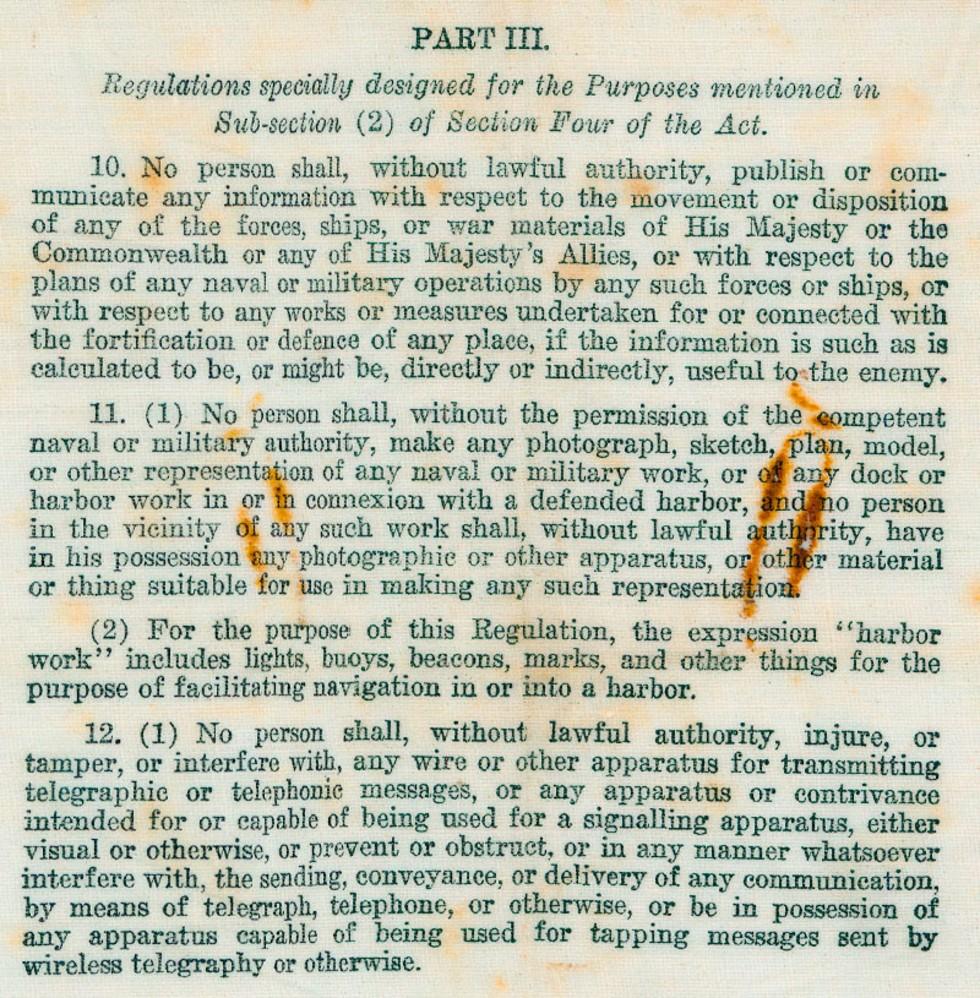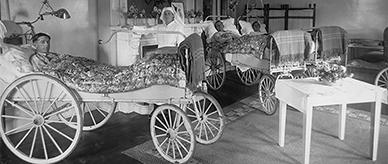


Transcript
[Heading:] PART III.
[Subheading in italics:] Regulations specially designed for the Purposes mentioned in Sub-section (2) of Section Four of the Act.
10. No person shall, without lawful authority, publish or communicate any information with respect to the movement or disposition of any of the forces, ships, or war materials of His Majesty or the Commonwealth or any of His Majesty’s Allies, or with respect to the plans of any naval or military operations by any such forces or ships, or with respect to any works or measures undertaken for or connected with the fortification or defence of any place, if the information is such as is calculated to be, or might be, directly or indirectly, useful to the enemy.
11. (1) No person shall, without the permission of the competent naval or military authority, make any photograph, sketch, plan, model, or other representation of any naval or military work, or of any dock or harbor work in or in connexion with a defended harbor, and no person in the vicinity of any such work shall, without lawful authority, have in his possession any photographic or other apparatus, or other material or thing suitable for use in making any such representation.
(2) For the purpose of this Regulation, the expression "harbor work" includes lights, buoys, beacons, marks, and other things for the purpose of facilitating navigation in or into a harbor.
12. (1) No person shall, without lawful authority, injure, or tamper, or interfere with, any wire or other apparatus for transmitting telegraphic or telephonic messages, or any apparatus or contrivance intended for or capable of being used for a signalling apparatus, either visual or otherwise, or prevent or obstruct, or in any manner whatsoever interfere with, the sending, conveyance, or delivery of any communication, by means of telegraph, telephone, or otherwise, or be in possession of any apparatus capable of being used for tapping messages sent by wireless telegraphy or otherwise.
Need help with your research?
Learn how to interpret primary sources, use our collection and more.

